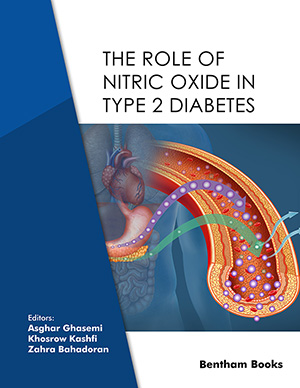Abstract
Nitric oxide (NO), a gaseous free radical, is a key signaling molecule in the different phases of the normal wound healing process. The beneficial effects of NO in wound healing are related to its antibacterial properties, regulation of inflammatory response, stimulation of proliferation and differentiation of keratinocytes and fibroblasts, and promotion of angiogenesis and collagen deposition. NO deficiency is an important mechanism responsible for poor healing in diabetic wounds. In this chapter, the function of NO in diabetic wound healing and the possible therapeutic significance of NO in the treatment of diabetic wounds are discussed. Current knowledge supports this notion that NO-based intervention is a promising therapeutic approach for diabetic wound healing.
Keywords: Advanced glycated end products, Coagulation, Diabetic foot ulcer, Endothelial nitric oxide synthase, Hexosamine pathway, Hyperglycemia, Neuropathy, Nitric oxide, Peripheral arterial disease, Polyol pathway, Protein kinase C, Reactive oxygen species, Superoxide anion, Wound healing.






















